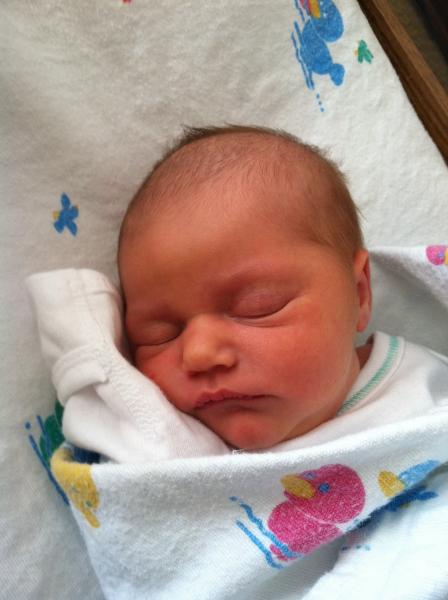Bet you can’t count how many movie scenes about childbirth you have watched in your lifetime. You know the ones highly choreographed to protract the drama leading up to the birth that then capture the magical, emotional euphoria after delivery. It always amazes me to see the perfectly pink, smiling, cherubic and hyper-alert four month old baby filmmakers try to pass off as a newborn. Well, truth be told, rarely –if ever– do they come out like that, so let’s manage some expectations and clarify why events happen as they do after the baby is born.
Your precious little angel floats in a swimming pool for nine months, squeezes through a narrow canal if a vaginal birth or superficial opening in a C-section and is thrust into air. Prior to this point, the neonate receives nutrients and is sustained via the umbilical cord. Upon entry into our world, a host of physiologic changes occur in mother and baby. For one, the pressure differential in the heart and lungs shifts in the infant upon taking his or her first breath. Certain holes in the heart required to maintain life in utero are no longer necessary and begin to close over a coordinated time frame in the early days of the postpartum period.
Because birth, though incredible every time, is no walk in the park, it can be normal for them to come out swollen, sometimes bruised with misshapen heads and peeling skin if they have been so-to-speak overcooked, for example (for those overdue). Individual maternal and fetal history play a critical role in these events and what you can expect.
First, the infant will be covered in a variable fashion with nature’s moisturizer called vernix with some blood and amniotic fluid thrown into the mix. In certain instances, stool can be added into the equation which might prompt more aggressive intervention - especially ones to clear and maintain an infant’s patent airway or provide additional respiratory support. The obstetrician will suction out the nose and mouth of the infant to assist in his or her proper and continued normal breathing. The doctor will clamp then cut the umbilical cord (unless this is reserved for a parent or loved one). Depending on the doctor, hospital, parental request and of greatest import the stable condition of the baby, the newborn may first be placed on the mother’s chest for skin-to-skin contact before being transferred to the warmer.
You will hear the infant cry, but it will unlikely be as loud or instantaneous as you imagined.
A newborn can lose a lot of heat per body surface area upon birth which puts him at risk of hypothermia. This is why the staff will vigorously dry the baby with blankets and immediately remove the wet ones as they get saturated. The baby will be thoroughly examined from head-to-toe while under the warmer to ensure normal anatomy, no signs of disease and possibly further suctioned if necessary. APGAR scoring will take place— this is a screening tool taken at 1 and 5 minute intervals (as well as 10 minutes in certain cases) that when high gives peace of mind of overall well-being. To aid in this vital signs and measurements are taken that include, among others: temperature, heart rate, breathing rate, length, weight and head circumference, and oxygen levels.
This evaluation is intended to catch signs of possible infection and risk factors for disease that could benefit from early intervention and prevent issues that could develop during the hospitalization. The infant and parents will be linked in hospital issued identification bands for abduction safety. Typically, prints will be taken of the infant while still under the warmer as well. Additionally, a gel-like substance will be placed on the eyes and an injection will be administered to the thigh as other disease prevention measures. If all is well and no problems are determined, then the adorable, bundle of joy will be transferred with you to the well baby nursery.
Most institutions do not have an in-between or step down unit. So, if there is an issue no matter how minor, then it is not uncommon for that baby to be transferred to the neonatal intensive care unit (NICU). Often, this has more to do with staffing capacity to accommodate additional monitoring and interventions or medication administration.
The differences between that four month old movie baby and your newborn are vast. Newborn babies eat, sleep, pee, and poop. And, these are very reassuring signs of overall well-being. With every week that passes, which is like a year of development that young, they become more and more alert and vigorous. They are easily arousable, but become more and more vigorous with a stronger and stronger cry with the passage of time. Their vision is poor, as they take many weeks to acquire a more coordinated gaze and visually track. So early on, they barely see greater than the distance from mom’s breast to her chin. Their suck and swallow matures as the weeks progress. And so on.
That said, the real thing can provide way more entertainment than any Hollywood feature.




